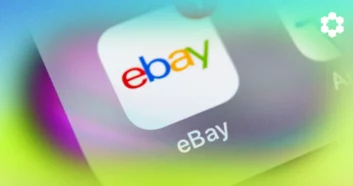“It all comes down to advertising” is a useful mantra for any retail enterprise.
After all, advertising is what drives interest in your products. It’s what keeps customers coming back. In short, it’s where sales begin.
In a fast-paced world with rapid advertising innovation, the demand-side platform (DSP) is a relative newcomer. But with Amazon DSP offering quite possibly the broadest reach of any ad-placement method, it’s sure to change the game.
What Is a Demand-Side Platform or DSP?
Demand-side platforms allow advertising buyers to reach multiple ad outlets through a single interface. DSPs can automatically place bids for ad resources from a variety of publishers.
In other words, a DSP gives you one place to manage your ads. The platform then delivers those ads across a variety of digital outlets, streamers, and websites, using AI-powered real-time bidding (RTB) to maximize results.
Amazon’s version works similarly to standard DSPs — but with a little Amazon flare.
What Is Amazon DSP?
For starters, Amazon DSP enables advertisers to leverage the retail giant’s massive data trove. First-party insights based on billions of observed shopping patterns across the customer decision journey give Amazon DSP a huge advantage.
With this data, Amazon DSP can provide sellers with a host of benefits, such as:
- Access to ad space they can’t obtain elsewhere,
- Comprehensive and unique inventory from Amazon’s third-party ad exchanges, Amazon Publisher Services (APS), and private marketplaces — all of which allow sellers to reach Amazon shoppers whenever and wherever they shop or consume content,
- Cross-device campaigns to meet customers through the devices and channels they prefer today,
- Access to on- or off-Amazon shoppers at scale.
In Amazon’s own words, “Achieve results with differentiated insights, inventory, and interoperable ad tech solutions that help drive brand equity on and off Amazon.”
- Effectively use Amazon DSP solutions across the full spectrum of media planning, activation, and measurement.
- Build an audience-first approach to connect with consumers where they spend their time.
- Leverage machine learning to automate decision-making across the open internet.
Amazon DSP is purpose-built for Amazon sellers, and provides a number of sales-boosting additional features, including audience solutions, campaign optimizations, and brand safeguards.
But how do these functions work, exactly?
How Amazon DSP Creates Audience Solutions
Reaching the most relevant audience is key to Amazon sales success. Fortunately, Amazon DSP lets advertisers tap into not only Amazon’s audiences, but their own as well.
Audience insights and robust pre-, mid-, and post-campaign performance analytics give sellers more tools for tweaking and improving audience reach.
Amazon Ads’ deep reporting analytics include key metrics, such as add-to-cart rate, total purchases, and product units sold, for brands that sell in Amazon’s store. They also give sellers unique metrics like pixel conversion rate and video completion rate for off-Amazon brands.
How Amazon DSP Helps with Ad Campaign Optimization
There are two ways sellers can use Amazon DSP to optimize their campaigns:
- Automatic optimizations automatically adjust bids according to the best formats, supply sources, and sites. The platform analyzes every impression against your goal in real time, yielding Amazon first-party insights based on observed shopping patterns. It also dynamically updates your budget according to your campaign goal.
- Manual optimizations allow sellers to refine budgets, audiences, bids, frequency caps, and supply. Sellers can also make use of display, image, video, and mobile ad types.
How Amazon DSP’s Brand Safeguards Work
With DSP, sellers can enjoy the same protections they do from other areas of Amazon.
Amazon DSP uses both Amazon’s own and third-party solutions — including manual site reviews and real-time bid evaluation — to uphold quality standards and brand safety.
The platform also monitors usage for traffic quality, viewability, and third-party supply standards.
How Amazon DSP Helps Ecommerce Sellers Scale On & Off Amazon

What’s the best thing about a DSP? Its ability to help you scale.
Amazon DSP doesn’t restrict sellers to Amazon. It places bids in real time across multiple platforms, optimizing your ads to targeted audiences. That means your ads get directly in front of those most likely to buy your products — wherever they are.
Sellers can use two campaign types to get results:
- Link-in campaigns direct shoppers from third-party sites and apps to your brand’s product detail pages on Amazon.
- Link-out campaigns use Amazon DSP to direct audiences to your brand’s off-Amazon landing page if the ad is for a product or service that Amazon doesn’t offer.
From creating campaigns to managing myriad delivery possibilities, Amazon DSP gives you the most comprehensive way to scale your Amazon business. As with any advertising, best practices for PPC apply.
Is Amazon DSP For Everyone?

Before figuring out if Amazon DSP is right for you, as a seller, you first have to understand its different management models, and its cost relative to your production. In that, Amazon DSP comes in two flavors:
- The managed-service model, which requires a fee and has a minimum spend requirement, offers complete campaign management on an insertion order (IO) basis.
- The self-serve model, which also requires a fee, allows you to create campaigns on your own, without required minimums.
Amazon DSP has a big reach that often gets fantastic results — and that reach comes at a premium. The managed-service model minimum, for instance, costs around $50,000 and is designed for companies that want access to Amazon DSP inventory, those that want consulting, or those with limited advertising experience. Given the hefty price tag, it might be out of reach for some sellers.
Regardless, advertising is a must-do activity for your Amazon business. When you’re ready for DSP, start by speaking to your Amazon Ads representative.
If you’re an Amazon seller or agency looking for a cost-effective way to manage your PPC campaigns, check out the fantastic Carbon6 tools PPC Entourage. While you’re there, discover all the other ways Carbon6’s tool suite can help simplify your success, from inventory management to listing optimization to Amazon reimbursements.
What’s Next For Amazon DSP?
Amazon has DSP some pretty great stuff on the horizon, including:
- A brand new DSP feature enables advertisers to reach customers in their homes by expanding to Alexa-enabled devices with a full-screen, prominent voice-enabled placement.
- New tech advancements take into account a variety of new signals so sellers can reach more consumers who express interests and behaviors relevant to your business goals.
- Recent Amazon DSP updates allow sellers to create campaigns that reach physical store digital signage, allowing customers to view or engage with a brand in a physical environment.
- Improved, simplified Marketing Mix Models (MMM) serve as a source of truth for determining sales impact from each marketing channel and publisher.
And that’s only a selection of recent improvements and new features. Expect Amazon to keep adding to and improving its DSP to meet the needs of an ever-growing and increasingly complex advertising landscape.




